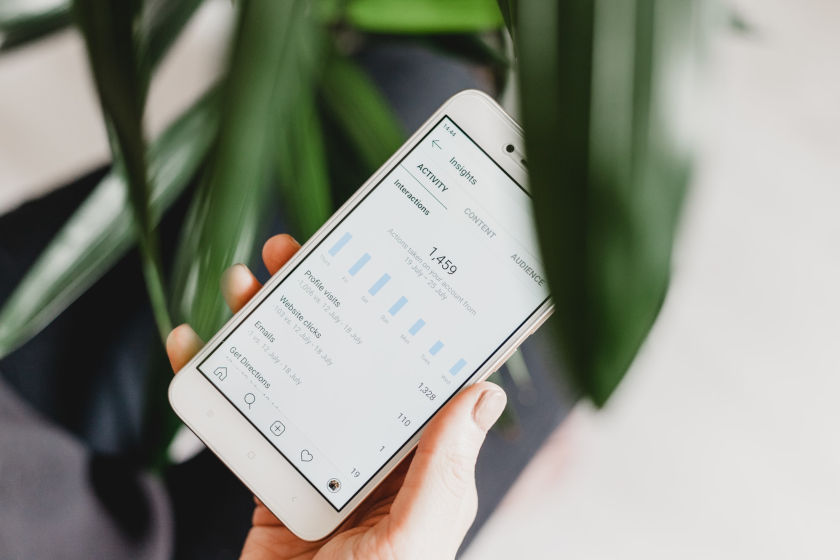What are Instagram Stories Bounces and How Can You Track Them?
In digital marketing terms, a “bounce” describes an instance when a person lands on a website and then leaves it without proceeding to view the other pages within the site. You might have heard the term “bounce rate” often referred to in regards to website analysis. That’s the percentage of visitors who “bounce off” a website after viewing only one page.

Photo by Carlos Muza on Unsplash
Since the term is descriptive and equally important in social media marketing, it can be applied to virtually any situation where people have the choice to explore more of your content or leave much faster than you’d like them to. On the example of Instagram Stories, your bounce rate is the percentage of people who leave your Stories without tapping through till the end.
Now, you definitely want to track this because it will tell you how well your Stories are performing and give you a hint if there’s something you need to change in your approach. But how do you do this?
This is going to depend on whether you’re dealing with an Instagram business profile or just a regular one.
Tracking bounces with Instagram Insights
If you have an Instagram business profile, you’ll have access to Instagram Insights, a feature which gives you all kinds of important metrics regarding both permanent and ephemeral content. When it comes to the latter, the metrics you need to track in order to get a hang of your bounce rates are:
Reach
This is the number of people who’ve seen your Story. When you post a sequence of Stories, it’s entirely normal for your reach numbers to decrease with each new Story. This reflects bounces, and they’re bound to happen to some extent, as people from different target groups won’t always be interested in everything that you’re serving. But you want to keep an eye on this number because if it starts to plummet at some point, you’ll have a clear indicator that you’re not doing something right.
Impressions
This shows the number of times a single Story has been viewed – which means it can be higher than your reach number. If you roll out something that’s really funny, impressive, or engaging, you’ll have people viewing the same Story more than once. Give yourself a tap on the shoulder and keep going in that direction with your content strategy.
Taps forward
A person can tap forward to view the next Story in your sequence before the current one has finished. It helps to observe the number of taps forward to gain some insight into which types of content your audience is rushing through.
For example, a high number of taps forward on video Stories shows that they’re not engaging or interesting enough. When it comes to photos, a tap forward isn’t necessarily indicative of badly performing content. It may just show you that people are speeding through but still eager to complete your Stories sequence.

Photo by Georgia de Lotz on Unsplash
Exits and Next Story
These metrics mirror a declining reach, and they can give you more insight as to how people bounced off your content. They both indicate the number of people who left your Story before completing it, but they show different things.
An Exit is noted when a person swipes out of the entire Instagram Stories feature while viewing your content. Now, although Insights won’t note to you exactly which action each user took, it’s important to note that an exit refers to different scenarios, when a user leaves your Story in order to:
- exit the entire Instagram app
- return to the main feed
- visit your profile and view your permanent content
Although exits initially have a bad connotation, you can see from the latter that they may indicate a situation that’s actually positive. For example, when you announce in your Stories that a new post is up on your feed and invite your audience to go check it out, a high number of exits will show that your Story was a success and they responded to your call to action.
Next Story, however, is the spooky number you don’t want to see. It shows the number of users who swiped away from your Story in order to view the next account’s Story. Once again, this is a number that simply gives more insight into a declining reach. It’s a hurtful one for Instagram marketers because it shows people were still eager to view Stories - only not the ones from you. This may sometimes simply be the result of people who’re not part of your target audiences straying off to your content. But if these numbers get higher than usual, they’re a clear sign that the content you’ve rolled out is not sitting well with your audience.
Tracking bounces for both business and regular profiles
If you’re not using a verified business profile, the only metric you’ll be able to see is your reach number.
Rest easy, however, because you’ll still be able to figure out how well your content is performing and whether you need to deal with high bounce rates. In the end, Reach is the essential metric for tracking bounces and calculating bounce rates. The lower the reach number for each consecutive Story, the higher your bounce rates. The metrics from Insights are useful, however, to help you do just that – gain insight into how or why people bounced off which can help establish a more detailed idea of what’s working or not.
Now that you’ve learned about Instagram bounces and tracking them, you’re better prepared to tackle the issue in your Insta Stories strategy. And that’s what we’re going to talk about in our next post, where we’ll give you some key tips for reducing bounce rates. Stay posted and follow our blog for more useful tips for upping your Instagram game.
Written by Angelina Harper.
